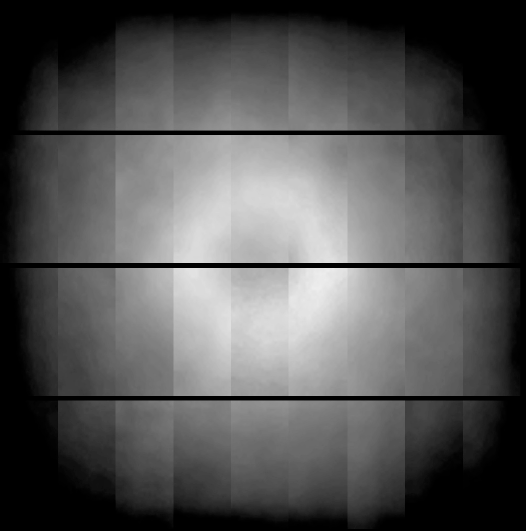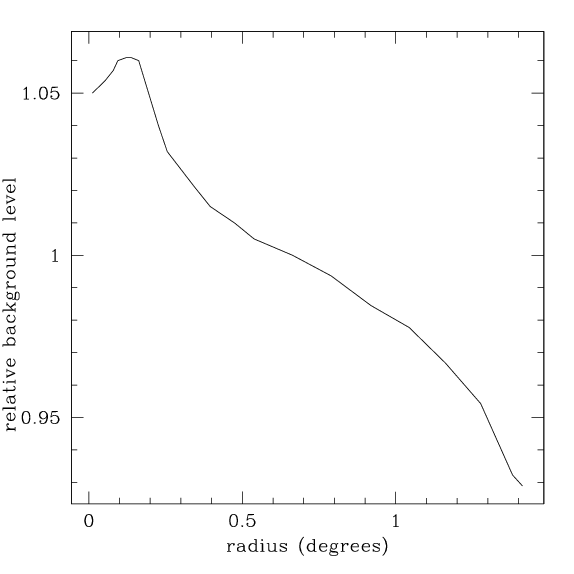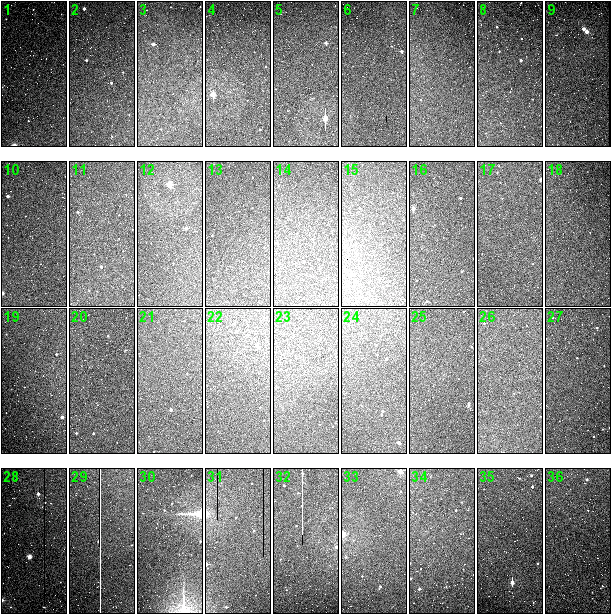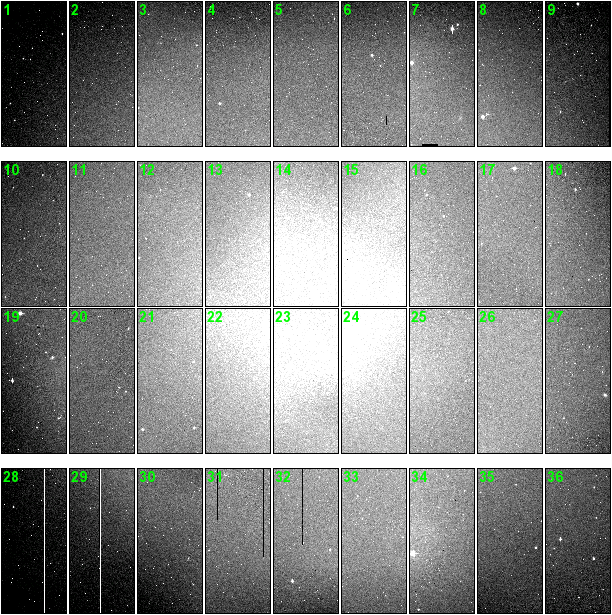|
Adopted method:
In order to remove the background one must have information as to what
the image would look like if the large galaxies weren't there. Thus
the best approach is to make a general map of the background variation
across the mosaic from data which do not contain bright
extended sources. This map can then be scaled to the sky level in
areas of the image that are not affected by the bright galaxies and
then subtracted.
Images prepared in the following way are labelled "g002" for "global background subtraction, version 2".
To create this map, the following procedure is used: For each run and
each filter, the CADC archive is searched for available MegaCam
images. Images with longer exposure times (>100 seconds) are
preferred. Shorter exposure images are only included if no long
exposure images are available. Although images taken as part of the
NGVS are preferred, all available images are considered. Images are
screened by eye. Images with conspicuous oddities in their backgrounds
are rejected. This typically includes images taken near twilight and
images where the moon has changed the illumination pattern. In
addition, images of very extended objects (such as nebulae) and images
with stellar densities are rejected. If possible, only one image per
pointing is used. Other images of the same pointing are discarded. In
some cases, this constraint is not possible, but in any event no more
than 20% of the images going into a background map are of the same
pointing. At minimum, 10 images are used to build a background map. In
some cases more than 40 are images are available.
|
Each image going into the background map is masked. SExtractor is run
on the images; the segmentation check image it generates is used to
reject pixels containing sources. To remove the halos around bright
stars, an area of 3 arc minutes is removed near USNO stars brighter
10th magnitude. The bad CCD pixels and columns are also masked. The
animation at right shows an example of the masking.
Note that only the core of the bright galaxy in chip 26 is masked.
Additional hand masking is required. This is done on a chip by chip basis.
|
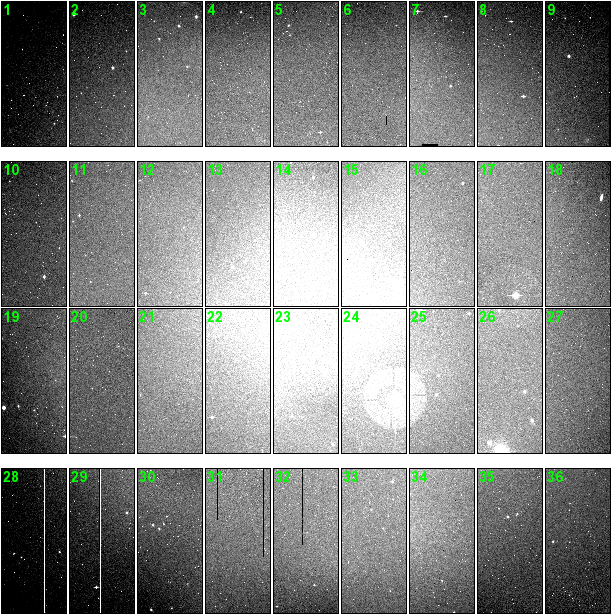
|
|
The images are then smoothed and sub-sampled. Medians are generated
on 128 pixel centres. The smoothing removes any faint residual
light from sources and increases the signal-to-noise of the background
measurements. The animation at right illustrates the smoothing.
|
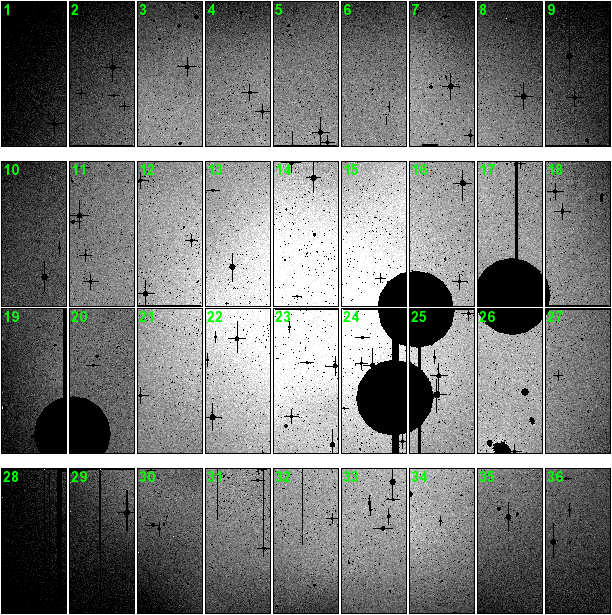
|
Next, these smoothed and sub-sampled images are normalized to unity
and combined. The normalization must be done carefully because of the
masking. For example, if there are masked chips near the centre of the
moasic, which is brighter the normalization factor will be
systematically under-estimated. The scaling and combination is done
iteratively until the normalization factors stabilize.
The new background map is applied to each of the images that went into
it. The map is scaled by the normalization factor and subtracted from
the input image. The residuals input image is examined by eye for extended
sources which were missed in the initial assesment. These include
faint stellar halos and galaxies which are too faint and diffuse for
SExtractor to detect. Occasionally, the residuals indicate problems on
over the whole mosaic. For example nearby bright stars can produce
large, but very faint halos. The bad chips and/or images are rejected
and the normalization and combinination step is repeated.
The procedure is typically iterated 3-4 times.
|
The animation at right shows the residuals of the
input images after the background has been removed.
The greyscale range is now +/- 1%; this is 10 times
the contrast of the animations above. The black chips
have been masked. A few unmasked faint stellar haloes
and galaxies remain.
|
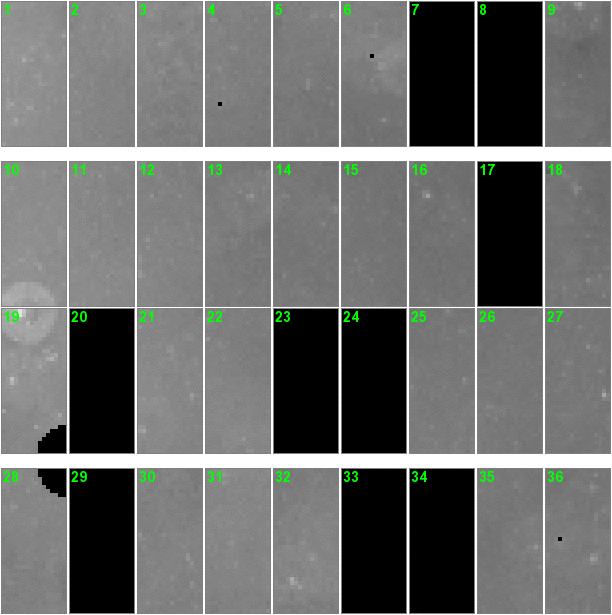
|
To use this background map, one first masks a science image, removing
the bad columns and pixels containing astronomical sources, as was
done with the images that went into background map. The background
map is carefully normalized to the science image and subtracted.
The resulting image has a median sky value of 0.
|
